

Organic chemistry. Structure of the organic methane molecule, the simplest hydrocarbon compound Organic chemistry is a chemistry subdiscipline involving the scientific study of the structure, properties, and reactions of organic compounds and organic materials, i.e., matter in its various forms that contain carbon atoms.[1][2] Study of structure includes using spectroscopy and other physical and chemical methods to determine the chemical composition and constitution of organic compounds and materials.[3] Study of properties includes both physical properties and chemical properties, and uses similar methods as well as methods to evaluate chemical reactivity, with the aim to understand the behavior of the organic matter in its pure form (when possible), but also in solutions, mixtures, and fabricated forms.

Choose Reliable Acetylene Gas Plant Manufacturer for Uncommon Plant. Are you searching acetylene gas plant manufacturer?

If your answer is positive, you are advised to explore the web instead meeting people here and there. There are a number of manufacturers available on the web, but choose an authentic one. You can authenticate a company after screening out its history and past track records. A known company not only would offer you technologically advanced plants, but also excellent customer support and after sales services. Virtual Textbook of Organic Chem. Organic Reactions: Education. Cell Size and Scale. Some cells are visible to the unaided eye The smallest objects that the unaided human eye can see are about 0.1 mm long.
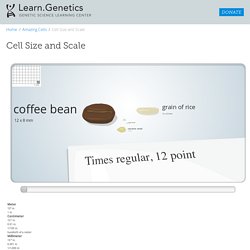
That means that under the right conditions, you might be able to see an ameoba proteus, a human egg, and a paramecium without using magnification. A magnifying glass can help you to see them more clearly, but they will still look tiny. Smaller cells are easily visible under a light microscope. It's even possible to make out structures within the cell, such as the nucleus, mitochondria and chloroplasts. To see anything smaller than 500 nm, you will need an electron microscope. Adenine The label on the nucleotide is not quite accurate. How can an X chromosome be nearly as big as the head of the sperm cell? No, this isn't a mistake. Inside a Cell.
Parts of the Cell - Cells Alive! For life all cells have basic needs.
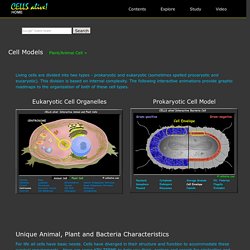
Cells have diverged in their structure and function to accommodate these survival requirements. The Cytoskeleton. Cells contain elaborate arrays of protein fibers that serve such functions as: establishing cell shape providing mechanical strength locomotion chromosome separation in mitosis and meiosisintracellular transport of organelles The cytoskeleton is made up of three kinds of protein filaments: Actin filaments (also called microfilaments) Intermediate filaments and Microtubules Actin Filaments Monomers of the protein actin polymerize to form long, thin fibers.
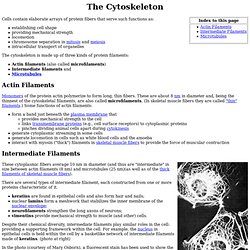
Chemical Composition of the Human Body. It's All About Carbon. If you have questions about climate change, please e-mail them to All Things Considered or call the show at 202-898-2395.

When the subject is global warming, our mood is usually "uh-oh. " Which makes sense, because a warmer Earth will lead to all kinds of disruptions and expensive adjustments that we could do without. NPR and National Geographic take a year-long journey around the globe to explore how climate is shaping people and people are exploring climate. Odd Todd But there is another way to think about all of this. What we have done here is a chemistry lesson, one that begins with the elemental cause of global warming: the behavior of the carbon atom. And since carbon atoms are rather small, we have turned our atom into a cartoon. This is the introductory segment of a five-part series that explains how carbon atoms form bonds, break apart and create the conditions that can lead to global warming.
Elements, Compounds & Mixtures. Types of Bonds. Custom Search Bonding Links.
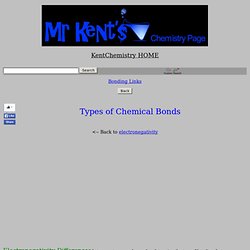
Chemical Bonds. Selected by the SciLinks program, a service of National Science Teachers Association.
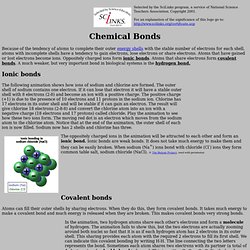
Copyright 2001. For an explanation of the significance of this logo go to: Because of the tendency of atoms to complete their outer energy shells with the stable number of electrons for each shell, atoms with incomplete shells have a tendency to gain electrons, lose electrons or share electrons. Atoms that have gained or lost electrons become ions. Oppositely charged ions form ionic bonds. Ionic bonds. Elements, Compounds & Mixtures. Chronology of Biology and Organic Chemistry. DNA-RNA-Protein. Scientists discover double meaning in genetic code. Scientists have discovered a second code hiding within DNA.
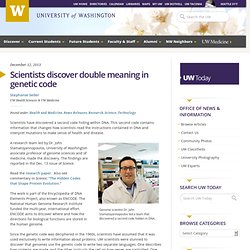
This second code contains information that changes how scientists read the instructions contained in DNA and interpret mutations to make sense of health and disease. High resolutionClick to expand Genome scientist Dr. John Stamatoyannopoulos led a team that discovered a second code hidden in DNA. A research team led by Dr. Read the research paper. Membranes Organize Cellular Complexity. Membranes organize proteins and other molecules enabling the cell to run much more efficiently than if everything were floating freely.
Mitochondrial membranes, for example, keep protein assembly lines together for efficient energy production. And the lysosome safely holds enzymes that would destroy essential proteins if released into the cytoplasm. Membrane-enclosed vesicles form packages for cargo so that they may quickly and efficiently reach their destinations. In this way, membranes divide the cell into specialized compartments, each carrying out a specific function inside the cell. Real life complexity inside an insulin-producing pancreas cell.